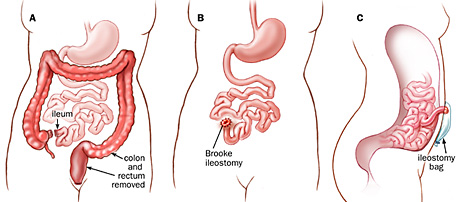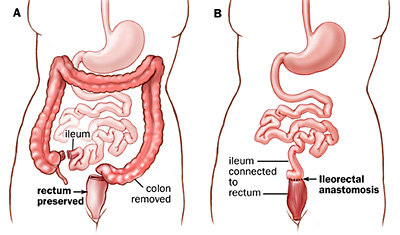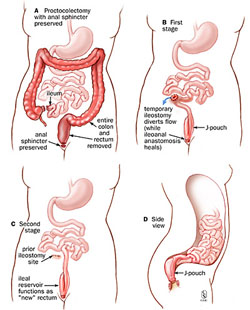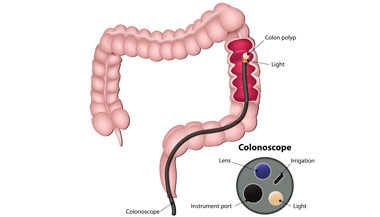Lynch Syndrome Treatment
The goal of treating Lynch syndrome is to remove the polyps and any presence of cancer. Sometimes, an endoscopic approach is sufficient; other times, your doctor may recommend surgery.
Treatment for Lynch syndrome includes the following:

Endoscopic Treatment
If your doctor finds polyps during the examination, he or she may be able to remove them during the colonoscopy. Biopsy forceps are inserted into the colonoscope to allow the doctor to see the polyps. If your doctor finds evidence of cancer, surgery offers the best chance for a cure.
Surgery
If cancer was found during the diagnosis, surgery is the first step in treatment.
There are a few different surgical options available. Your doctor will explain each one in detail and help you choose the best approach. Surgical options include the following:
Total Proctocolectomy with Brooke Ileostomy

During this procedure, the entire colon and rectum are removed. Your doctor will perform an ileostomy, which brings your small intestine out through the abdominal wall. Waste collects in an ileostomy bag. This procedure is generally performed when the following occurs:
- Invasive cancer is found in the rectum.
- The anal sphincter is not functioning normally.
- The sphincter muscle is weak.
An ileostomy can be temporary or permanent.
Colectomy with Ileorectostomy

During this procedure, your doctor removes the colon but preserves all or most of the rectum. He or she then attaches the small intestine to the upper portion of the rectum. This is a less complicated operation than a total proctocolectomy and is designed to preserve bowel function. However, since the rectum is not removed, polyps and cancer may develop.
Restorative Proctocolectomy
During this procedure, the entire colon and most, if not all, of the entire rectum are removed. The ileum (end of the small intestine) is attached to the rectum with the creation of an ileal pouch. The advantage of this procedure is that you may maintain bowel continence while removing all of the at-risk large intestinal lining. The ileal pouch provides a place for rectal storage.

Typically, the operation is performed in two stages:
- A temporary ileostomy is created.
- After a period of time, your doctor removes the ileostomy to direct the intestinal waste to the ileoanal pouch.





